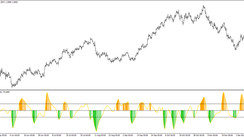Investors continue to give preference to protective gold, yen and dollar, while the main world stock indexes continue to decline. There are no signs of a weakening of the Russian-Ukrainian conflict, so the likelihood of problems in the economy and longer inflationary pressures is growing. Meanwhile, European currencies continue to decline against the dollar.
As the EU Statistics Office reported yesterday, annual inflation in Germany accelerated to 5.1% in February, and economists predict that annual inflation in March will exceed 5.5%. Russia's military operation on the territory of Ukraine has led to a further increase in oil and natural gas prices, but this is not yet reflected in the February inflation data.
As Philip Lane, chief economist of the European Central Bank, said last Friday, the military conflict in Ukraine could reduce Eurozone GDP by 0.3%-0.4%. In the worst-case scenario, GDP will shrink by almost 1%. Also, in his opinion, a significant increase in the inflation forecast for 2022 is possible.
EUR/USD may receive support if the Fed, against the background of current events, will raise the rate more slowly than is currently expected in the market. At the same time, the first increase in the ECB interest rate is now not expected earlier than 2023, whereas December of this year was previously scheduled. And much of the dynamics of the euro will also be conditioned by information about the crisis in Ukraine.
Thus, a further decline in EUR/USD is most likely, and in case of a breakthrough of the local support level of 1.1000, the lower line of the descending channel on the weekly EUR/USD chart and the 1.0900 mark becomes the target.
From the news for today, market participants will pay attention to the publication at 10:00 (GMT) of consumer price indices (CPI) for the Eurozone, the ADP report on the level of employment in the US private sector (at 13:15) for February and the speech of Fed Chairman Powell in Congress, which will begin at 15:00 (GMT). Investors want to hear from Powell his opinion on the Fed's future plans for this year. Any hints from Powell about the possibility of changing the current monetary policy will cause an increase in volatility in dollar quotes and on the US stock market.
As for the ADP report on the level of employment in the private sector, its publication usually has a strong impact on the market and dollar quotes. An increase in the value of this indicator has a positive effect on the dollar. It is expected that the growth in the number of employees in the US private sector in February amounted to +388,000 (against a drop of -301,000 in January 2022, an increase of 807,000 in December, 534,000 in November, 571,000 in October, 568,000 in September, 374,000 in August, 330,000 in July, 692,000 in June, 978,000 in May, 742,000 in April, 517,000 in March, 117,000 in February, 174,000 in January 2021). This is a very strong indicator, which gives reason to hope for an equally strong official report of the US Department of Labor, which will be presented on Friday (at 13:30 GMT). Although the ADP report does not have a direct correlation with the official data of the US Department of Labor on the labor market, however, it is often their harbinger, having a noticeable impact on the market. The market reaction may be negative, and the dollar will decline if the data turns out to be worse than the forecast. However, most likely, this impact will be of a short-term nature. The Fed is determined to tighten its monetary policy. The question is about the pace of tightening and the scale of this process.
Following the results of the January meeting, the Fed leaders confirmed the decision to accelerate the reduction of asset purchases in order to complete the QE program in March 2022 and start raising interest rates. The divergence of the trajectories of the Fed's monetary policy in comparison with the monetary policies of other major world central banks will become one of the determining factors in the dynamics of the dollar, contributing to its further strengthening, while the ECB continues to maintain a soft monetary policy and also continues the quantitative easing program.





